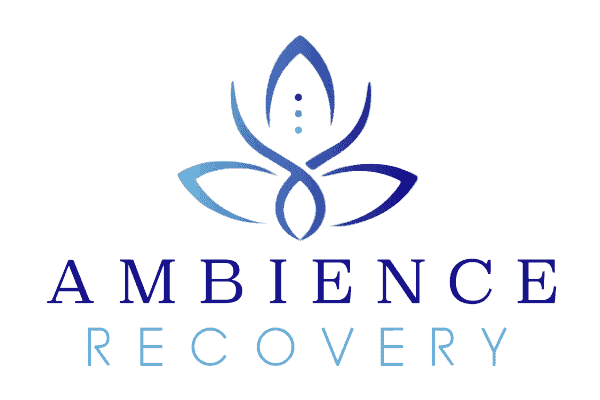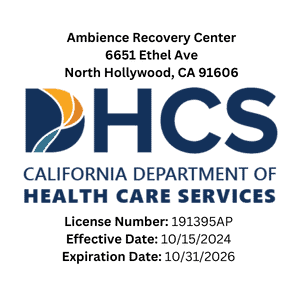Key Takeaways
- “Friend of Bill W” is a term used to discreetly identify members of Alcoholics Anonymous (AA).
- Understanding AA meeting lingo helps newcomers feel comfortable and connected.
- AA is built on principles of anonymity, support, and the 12-step recovery process.
Introduction to Phrases in AA Recovery
Alcoholics Anonymous (AA) is a lifeline for many people recovering from alcohol addiction. Founded on fellowship and support, AA provides a safe space for individuals seeking sobriety. However, stepping into your first AA meeting can feel overwhelming, especially when you hear unfamiliar phrases like “Friend of Bill W.”
This guide explains the meaning behind this term and other common AA lingo. By understanding these words and their purpose, you can feel more at ease as you begin your journey toward recovery.
Who is Bill W, and What Does “Friend of Bill W” Mean?
Bill W., or Bill Wilson, was one of the co-founders of Alcoholics Anonymous. Along with Dr. Bob Smith, he created AA in 1935 to help people struggling with alcoholism. Together, they developed the 12-step program, a cornerstone of AA today.
The phrase “Friend of Bill W” is a discreet way for members to identify themselves or others who belong to AA. It reflects AA’s emphasis on anonymity—a vital principle that protects members’ privacy and creates a safe environment for open sharing.
For example, someone might use the term in public to signal their involvement in AA without explicitly mentioning it. This phrase has become a symbol of solidarity among those in recovery.
Common AA Meeting Terms and Phrases
Attending an AA meeting for the first time can feel confusing if you’re unfamiliar with its unique language. Here are some common terms you might hear and what they mean:
The Big Book
The Big Book is the foundational text of Alcoholics Anonymous. Officially titled Alcoholics Anonymous, it outlines the 12 steps, shares personal recovery stories, and guides overcoming alcohol addiction.
12 Steps and 12 Traditions
The 12 steps are spiritual principles that guide personal recovery, while the 12 traditions ensure group unity and function. Both are key elements of AA’s success.
Sponsor and Sponsee
A sponsor is a more experienced AA member who mentors someone new to the program (the sponsee). Sponsors provide guidance, support, and accountability as sponsees work through the 12 steps.
Triggers
Triggers are situations, emotions, or environments that may lead someone to drink. Learning to recognize and manage triggers is an important part of recovery.
Open and Closed Meetings
Open meetings are open to anyone, including family and friends of AA members. Closed meetings are reserved for individuals who have a desire to stop drinking, ensuring a more private and focused setting.
These terms and phrases help create a shared language that fosters understanding and connection among AA members.
The Core Principles of AA
AA operates on a few key principles that make its program effective:
Anonymity
Anonymity allows members to share openly without fear of judgment or exposure. That’s why phrases like “Friend of Bill W” exist—to protect privacy while building trust.
Fellowship
AA provides a community where individuals with similar struggles support one another. This fellowship is often a lifeline for those in recovery.
The Primary Purpose
AA’s primary goal is simple: to help members achieve and maintain sobriety while supporting others who seek the same. This shared purpose strengthens the group’s unity and effectiveness.
How AA Meetings Work and What to Expect
Knowing what to expect can ease your nerves if you attend your first AA meeting.
Structure of a Meeting
Meetings typically begin with a reading from the Big Book or discussing the 12 steps. Members may then share their experiences, struggles, and successes. Participation is voluntary, so you can simply listen if you prefer.
Welcoming Atmosphere
AA meetings are designed to be supportive and nonjudgmental. Whether attending an open or closed meeting, you’ll find people who understand what you’re going through and want to help.
Sharing Experiences
Sharing is a big part of AA meetings. Members talk about their journeys, offering insight and encouragement to others. Hearing these stories can be inspiring and help you feel less alone.
Tips for Newcomers to AA
Starting something new can be daunting, but these tips can help make your first AA meeting a positive experience:
Arrive Early
Arriving a few minutes before the meeting begins allows you to familiarize yourself with the setting and meet other attendees.
Introduce Yourself
If you’re comfortable, let someone know you’re new. They’ll often go out of their way to welcome and guide you.
Listen and Learn
Take your time to observe and listen. You don’t have to speak until you are ready; there’s no pressure to share.
Attend Multiple Meetings
Every meeting has its dynamic. Try attending several to find one that feels right for you.
Keep an Open Mind
The 12-step program might initially feel unfamiliar, but many find it incredibly helpful. Give yourself the chance to explore it fully.
Conclusion
Understanding AA meeting lingo, like “Friend of Bill W,” helps create a sense of belonging and familiarity in recovery. These terms reflect AA’s commitment to anonymity, support, and shared purpose.
If you or someone you love is struggling with alcohol addiction, taking the first step toward recovery is crucial. Alcoholics Anonymous offers a community of support, while professional treatment can provide personalized care for lasting sobriety.
For compassionate treatment and expert guidance, contact Ambience Recovery at 866-721-7470 today. Your journey to recovery begins with a single step.
FAQs
What does “Friend of Bill W” mean in AA?
It’s a discreet way to identify someone as a member of Alcoholics Anonymous, honoring the principle of anonymity.
Why is anonymity important in Alcoholics Anonymous?
Anonymity ensures privacy, allowing members to share openly without fear of judgment or exposure.
What is “The Big Book” in AA?
The Big Book is AA’s foundational text, outlining the 12 steps, personal stories, and recovery guidance.
What’s the difference between open and closed AA meetings?
Open meetings are open to anyone, while closed meetings are for those with a desire to stop drinking.
How do I find an AA meeting near me?
Visit the Alcoholics Anonymous website or ask a local treatment center for recommendations.
What are the AA principles?
The AA principles are the Twelve Steps, which include admitting powerlessness over addiction, seeking spiritual guidance, making amends, and practicing ongoing self-reflection and service to others.
Is AA effective for recovery from drug and alcohol addiction?
AA is effective for many individuals, providing a supportive community and structured program for long-term sobriety, although success depends on personal commitment and individual circumstances.
What age did Bill Wilson get sober?
Bill Wilson, the co-founder of Alcoholics Anonymous, got sober at the age of 39 in 1934.
What is the rule 62 in tradition 4?
Rule 62 comes from AA folklore and means, “Don’t take yourself too seriously.” It reminds groups and individuals to maintain humility and perspective in their recovery journey.
What are the different kinds of AA meetings?
AA meetings include open meetings (for anyone interested), closed meetings (for those who want to stop drinking), speaker meetings, discussion meetings, step meetings, and Big Book studies, each offering unique formats and focuses.
Resources
https://aa.org.au/new-to-aa/frequently-asked-questions/glossary-of-terms/
https://www.12step.com/glossary-of-terms
https://www.aa.org/sites/default/files/literature/assets/p-16_theaagroup.pdf
Katie is a Licensed Clinical Social Worker who has worked as a primary therapist, supervisor, and now clinical director for SUD/MH treatment centers for the past 12 years. Katie is trained in Brainspotting, EMDR, Internal Family Systems and Dialectical Behavior Therapy and is passionate about treating substance use disorders, trauma and grief.






